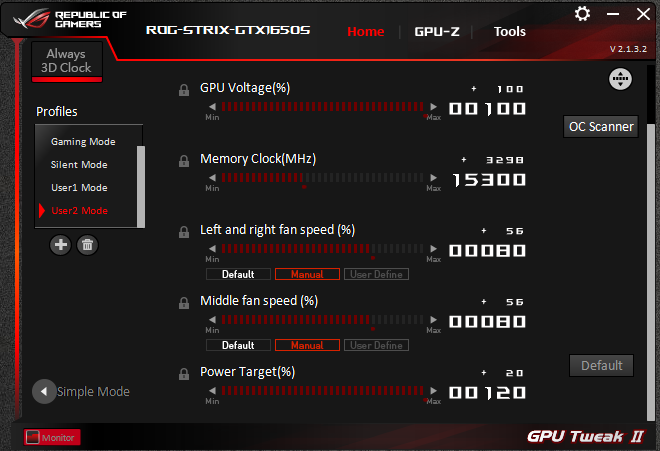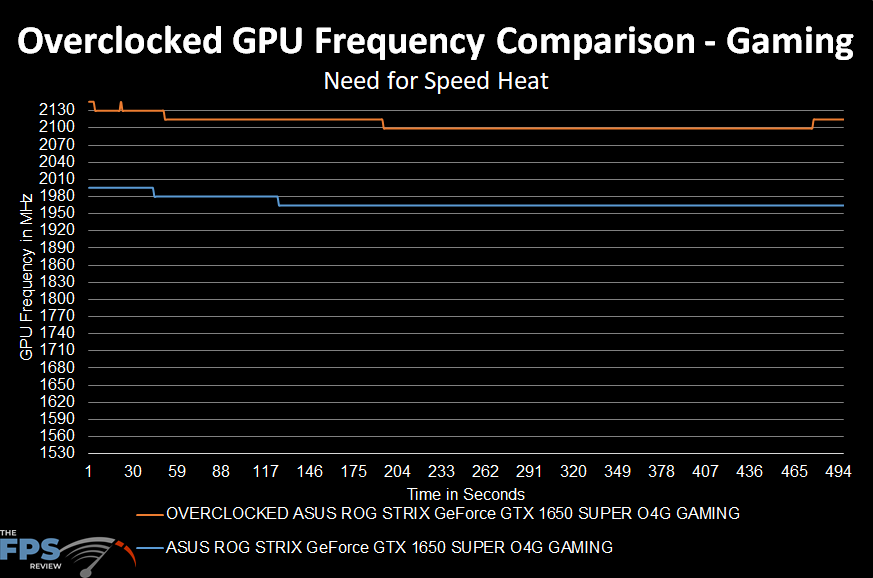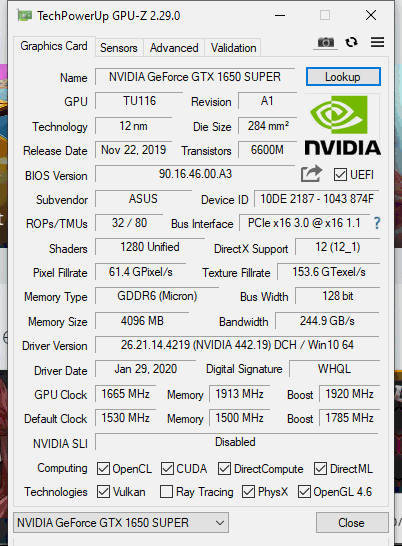Overclocking
Here is how to overclock the ASUS ROG STRIX GeForce GTX 1650 SUPER O4G GAMING video card and our final overclock. We used the latest version of ASUS GPU Tweak II.
Highest Stable Overclock


Using ASUS GPU Tweak II, we were able to bring the Power Target up to +20 on this video card for a total of 100 to 120%. We also raised the GPU Temp Target and turned up the fan speeds to 80% to ensure the highest possible overclock. We were also able to manipulate the voltage of the GPU with this software by setting it to +100. However, we don’t think it was actually working, as we never saw the GPU voltage change. It may be locked, which is a common thing.
In the software, we found the highest stable setting of +135 GPU Boost Clock which set it to 1920MHz boost clock. For the memory, we were able to set it to +3298 for a total of 15.3GHz versus the default 12GHz. This brings the memory bandwidth up from 192GB/sec to now 244GB/sec, a nice big jump.
Interestingly with this overclock we did not need 100% fan speed, keeping it quiet at 75-80% was what we used, but even that was overkill. We could have settled for practically no increase to be honest.
GPU Frequency

In the graph above we see what this overclock translates to on the GPU frequency while gaming compared to the default clock speed. Remember, this video card runs at 1965MHz out-of-the-box with no changes.
Our overclock actually starts as high as 2145MHz for the briefest of times, it then drops to 2130MHz, and then to 2115MHz and finally settles at a smooth 2100MHz (2.1GHz) while gaming. That means our overclock brought clock speed up 135MHz or 7%.
Then on the memory, it overclocked 28% higher. We were really impressed by how high we could overclock the GDDR6 memory on this, from 12GHz to over 15GHz is not shabby at all. Even the GPU frequency is impressive giving us a solid 2.1GHz while gaming. That’s a high-frequency anyone can be proud of.
GPUz


Above are the GPUz screenshots. The GPU temperature is only 51c with the fans at 80%, so the temperature is not an issue holding the GPU back. Power consumption is 117.1W and the voltage actually didn’t even increase, staying at 1.0500V. Imagine if one could truly boost the voltage on this GPU what it might do.
Final Overclock
GPU: 2100MHz
Memory: 15.3GHz
